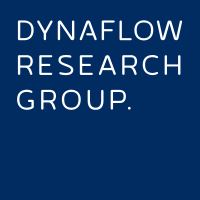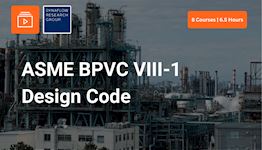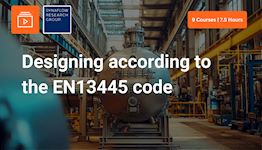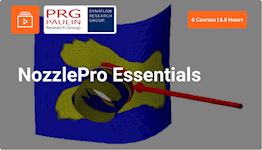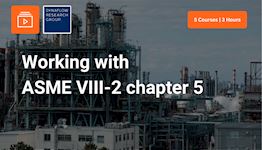Pressure Vessel Analysis using PV Elite
Why take this course?
This self-paced learning path guides participants through using PV Elite and CodeCalc for pressure vessel and heat exchanger design per ASME BPVC VIII and EN 13445. Spanning 7 courses, it covers user interfaces, nozzles, openings, flanges, tubesheets, and saddles. The program includes video lectures, quizzes, and exercises, and offers a certificate with PDH credits upon completion.
What you'll learn
After these courses, you...
• have gained familiarity and confidence in the user interface of PV Elite and CodeCalc,
• understand the workflow for pressure vessel design, can implement appropriate vessel details, utilities, and options within vessel design using PV Elite,
• have seen the basics of the content and theory within various pressure vessel codes, know how PV Elite can be used to aid in identifying problems in a vessels design and for designing code conforming mitigation measures,
• know how to design a working pressure vessel design from scratch to completion through the use of PV Elite.
• have completed and seen the worked solution to multiple example exercises.
About the course
Getting started using PV Elite for pressure vessel design and analysis, reviewing calculations, or wanting to broaden your skills in this software? This learning path teaches you how to design all common pressure vessels and heat exchangers conform ASME B&PV VIII and EN 13445 using PV Elite and CodeCalc.
This learning path is split into 7 courses, and starts by first taking the participant through the user interfaces in PV-Elite and then designing a simple pressure vessel. Through the following courses, all common features of PV-Elite are covered with specific courses on nozzles, openings, flanges, heat exchanger tubesheets and saddles, during which the input of loads and the output reporting will be explained.
The in-depth content within these courses takes the form of video lectures and exercises. Here the participant has the opportunity to attempt the exercises and then follow the extensive recorded explanation from the instructors. Thereby providing the skills needed for pressure vessel design in PV Elite according to ASME VIII-1 or EN 13445.
Meet your instructor
Who should attend this course
• Starting engineers designing pressure vessels using PV Elite.• Engineers who may be switching from another software package.
• Those involved in reviewing pressure vessel design calculations using PV Elite.
Prerequisites
A basic understanding of pressure vessels is beneficial.Program & Details
-
Welcome
1. Welcome & Your instructor
2. Content overview
3. How to use this course -
Course 1 - Introduction to PV Elite & CodeCalc
1. PV Elite Interface & Features
2. Creating a Pressure Vessel in PV Elite
3. CodeCalc Interface & Features
4. Configuration Editor
5. Creating/ Editing Units
6. Exercise 1.1 - Custom Unit File
7. Creating/ Editing Materials
8. Exercise 1.2 - Custom Materials -
Course 2 - Pressure Vessel Analysis in PV Elite
1. General Vessel Design & Analysis
2. Exercise 2.1 - Vertical Vessel with ASME VIII div 1
3. PD 5500 versus ASME VIII-1 Projects
4. Exercise 2.2 - Horizontal Vessel with PD5500
5. Exercise 2.3 - Converting a vessel from one code to another -
Course 3 - Heat Exchangers in PV Elite
1. Introduction to Heat Exchangers
2. ASME VIII Heat Exchangers
3. Creating a Heat Exchanger in PV Elite
4. Exercise 3.1 - Fixed Tubesheet Heat Exchanger
5. Exercise 3.2 - Floating Tubesheet Heat Exchanger
6. Exercise 3.3 - U-Tube Bundle Heat Exchanger -
Course 4 - Flange Analysis in PV Elite
1. Modelling Flanges in PV Elite
2. Equivalent Pressure Method Method for Standard Flanges
3. Flanges in CodeCalc
4. Exercise 4.1 - Flanges in CodeCalc
5. Exercise 4.2 - Model with Flanges
6. Taylor-Forge Analysis
7. EN 1591 Analysis
8. Exercise 4.3 - EN flange analysis -
Course 5 - Nozzle Analysis Options in PV Elite
1. Area Replacement Rules for Nozzles
2. Nozzle Analysis using WRC Guidelines
3. Designing Nozzles in CodeCalc
4. Exercise 5.1 - Nozzles in CodeCalc
5. Exercise 5.2 - Evaluating external loads in CodeCalc
6. Designing Nozzles in PV Elite
7. Exercise 5.3 - Nozzles in PVElite
8. Analysing Nozzle Pairs
9. Exercise 5.4 - NozzlePairs in PV Elite -
Course 6 - Introduction to Saddles, Lugs, Legs, & Jacketed Vessels in PV Elite
1. Saddles in PV Elite
2. Exercise 8.1 - Saddled Vessel
3. Lugs in PV Elite
4. Legs in PV Elite
5. Half-Pipe Jackets in PV Elite
6. Exercise 8.2 - Jacketed Vessel -
Course 7 - Miscellaneous Features in PV Elite & Reporting
1. Non-Circular Vessels in PV Elite
2. Weld Seams and Fatigue
3. Miscellaneous Utilities
4. Visualisation Features
5. Reporting in PV Elite
6. Exercise 9.1 - Customising Reports
7. Common Warnings -
Final Notes & Certificate
1. Congratulations
2. Course evaluation survey
3. Your Personal Certificate
Certification
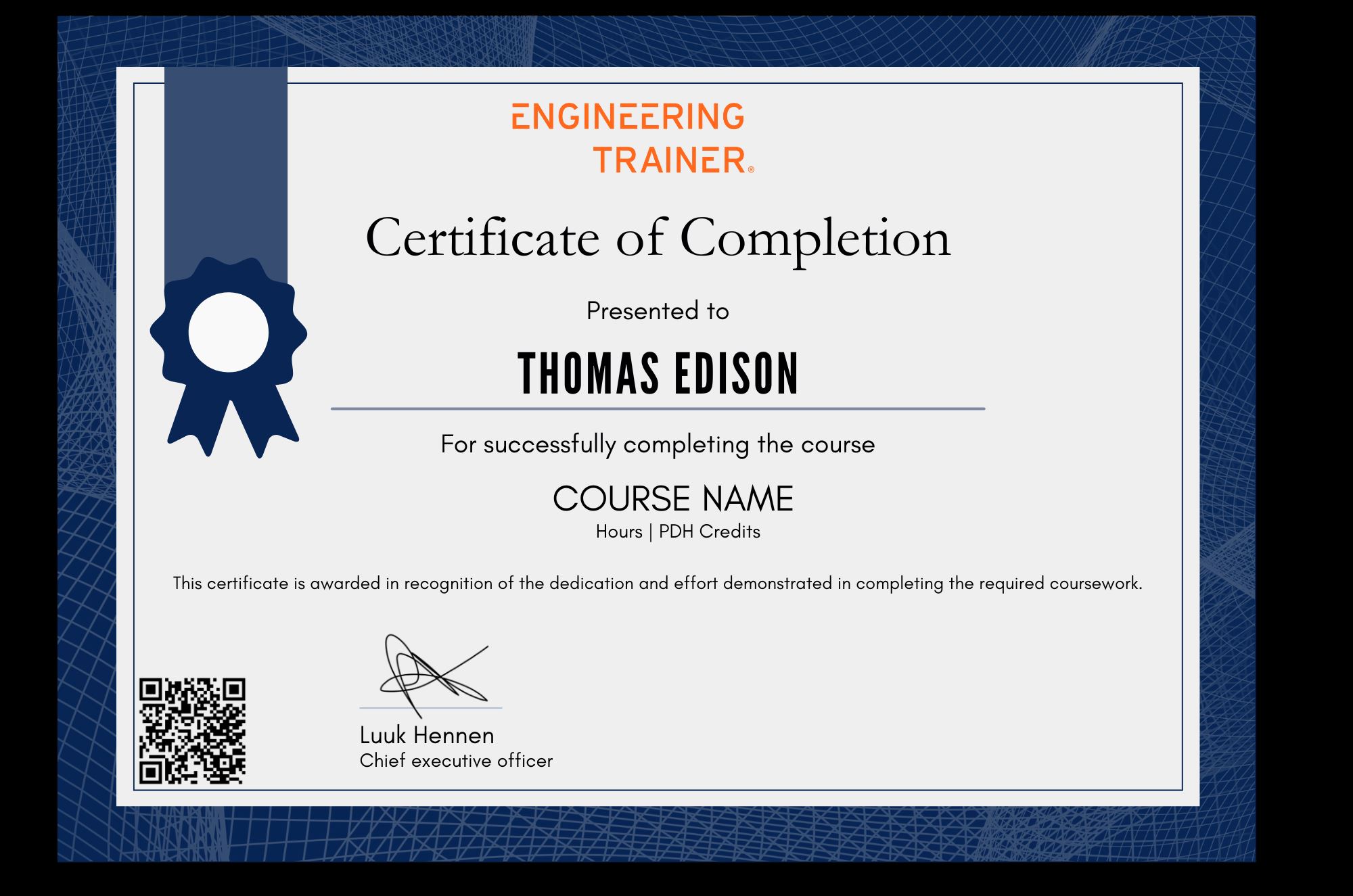

Why choose EngineeringTrainer
-
Learn at Your Own Pace
-
Advance Technical Competences
-
Courses by Industry Authorities
The explanation of the saddle analysis and API 579 introduction were very valuable.
Engineer - Petrokon



